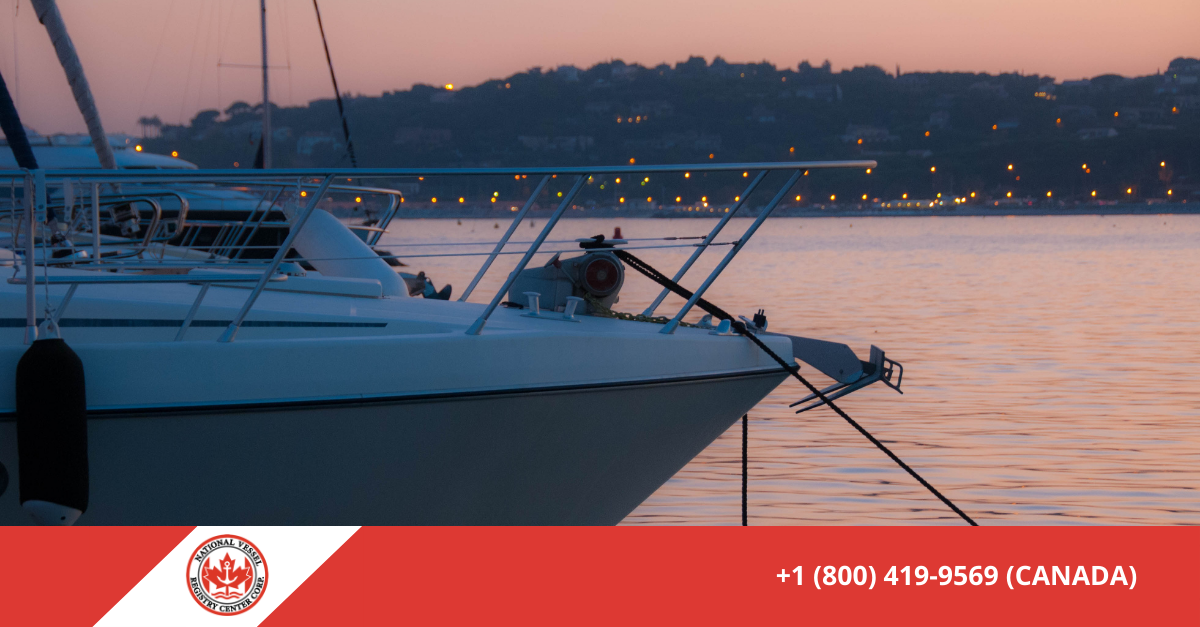When buying or selling a registered boat in Canada, one of the most important documents involved in the process is the bill of sale. This document formalizes the transfer of ownership and can be critical in establishing clear, legal proof of who owns the boat. While it may seem like just another formality, a well-prepared bill of sale for a boat helps prevent disputes, supports the proper registration of the boat, and serves as an official record of the transaction.

Unlike some government forms, there is no single, official bill of sale form provided by Transport Canada. As a result, many buyers and sellers are unsure what information should be included. We’ve got your back. This guide goes into what a bill of sale should include.
Remember: anyone involved in a boat transaction can create their own bill of sale as long as it contains all the necessary elements. What matters most is that the document is detailed, accurate, and includes all the components expected in a legitimate ownership transfer. This can help ensure a smoother transaction, support later documentation needs, and protect both parties involved.
Why a Bill of Sale for a Boat Matters
A bill of sale acts as an official record of the transaction between the seller and the buyer. It is especially important when registering the boat, as the authorities will often require this document to process the registration or transfer. It also becomes vital if there is ever a legal dispute regarding the ownership or condition of the boat.
Even if a boat is being given away rather than sold, having a bill of sale establishes when ownership was transferred. This can protect the former owner from future liability if something happens after the new owner takes possession.
Key Components of a Proper Bill of Sale for a Boat
Although the layout and wording of a bill of sale can vary, certain elements should always be included to ensure the document serves its purpose effectively. The following items are typically expected:
-
Names and Contact Information of Both Parties
The full legal names of both the buyer and the seller must appear on the bill of sale. Owners should include their current addresses and contact information to clearly identify the individuals involved. This helps ensure both parties can be contacted if needed.
Including identification numbers, such as driver’s licence numbers, is not mandatory but can add another level of verification.
-
Description of the Boat
A detailed description of the boat being sold is essential. This section should include:
- Make and model of the boat
- Year of manufacture
- Length and hull material
- Hull Identification Number (HIN)
- Transport Canada registration number, if applicable
- Any distinguishing features or customizations
The more precise this section is, the easier it will be to confirm the identity of the boat during registration or in a legal context. This description acts as the foundation of the transaction and ties the bill of sale directly to the boat in question.
-
Sale Price and Terms of Sale
Clearly stating the sale price is necessary for legal and tax purposes. The bill of sale should specify the total amount paid for the boat and whether it was paid in full at the time of sale or through some other arrangement, such as installments or a trade.
If the boat is being transferred as a gift or at no cost, the bill of sale should say so explicitly (e.g., “Boat transferred as a gift with no financial exchange”).
Any additional terms, such as payment deadlines or conditions of sale, should also be included. This might involve whether the boat is being sold “as is,” or if the seller is providing any warranties.
-
Date of Sale and Transfer of Ownership
The exact date of the transaction should appear on the document. This date becomes the official point at which ownership changes hands. It’s important for insurance, registration, and legal timelines.
Owners should clarify if the boat will be delivered at a later date or a different location. Otherwise, the assumption is that the buyer assumes ownership and responsibility as of the date listed.
-
Signatures of Both Parties
For the bill of sale to be legally binding, both the buyer and the seller must sign the document. Their printed names should appear below their signatures. Some individuals choose to have the document witnessed or notarized to provide an extra level of security, although this is not mandatory in most provinces.
If a party signs on behalf of a company or organization, they should note this along with their position.
-
Additional Items or Accessories Included
Owners should list all items included in the sale—such as trailers, motors, GPS systems, or safety equipment—in the bill of sale. Including these details helps avoid confusion and sets clear expectations about what the transfer covers.
Owners can list each item with a brief description and estimated value, especially if it affects the overall price.
-
Statement of Condition
Many sellers include a basic statement indicating that the boat is being sold in its current condition. This often takes the form of an “as is, where is” clause. While this doesn’t eliminate all liability, it reinforces that the buyer has had the opportunity to inspect the boat.
Owners can use this section to note any known defects or repairs made to the boat. Transparency in this area can help reduce the risk of future disputes.
Further Tips for Writing a Bill of Sale
While it is possible to download sample templates from various sources, creating a bill of sale tailored to a specific transaction is often more effective. Using the correct form ensures owners include all relevant details and avoid relying on generic or outdated formats.
Having a detailed, customized bill of sale makes the registration process easier and minimizes delays caused by missing or inaccurate information. The more information you include, the better.
Buyers and sellers should type the bill of sale so it’s legible. Both parties should keep copies, and one copy should be retained for official records.
Supporting a Smooth Transition
Having a clear, comprehensive bill of sale in place helps ensure a smooth transition for both parties. This process eliminates confusion over agreements and sets clear terms for transferring the boat.
By understanding what a bill of sale should contain and approaching the process thoughtfully, boat owners can protect themselves legally and financially. A carefully prepared document helps ensure that the registration process proceeds without unnecessary delays or complications, supporting full ownership recognition across Canada.
If you decide to register your boat or to get a pleasure craft licence, our portal is here to assist.
